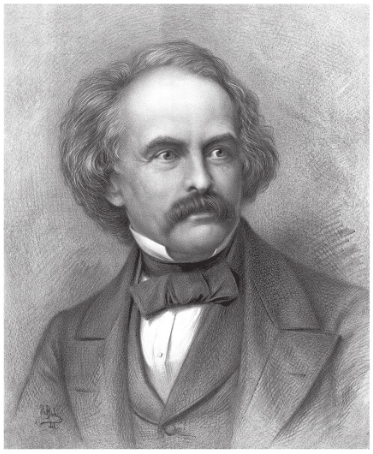Between his role in politics and prolific literary career, Nathaniel Hawthorne is one of the most well-known figures in American culture. Much of his work was dark romantic, a subgenre of Romanticism that explored the grotesque underbelly of society. He is most known for his work The Scarlet Letter – a publication that helped secure his place in the literary scene. Today, Hawthorne is recognized as one of the figures who helped transform the legacy of literature in America. Here, we’re taking a deep dive into the life of one of America’s most famous writers.
The Writer’s Life Begins in Salem, MA
Hawthorne’s family stretches far into Salem’s history: his great-great-grandfather oversaw the Salem witch trials, while his great-great-great-grandfather held many important political positions. Although Hawthorne was born in Salem in 1804, he spent much of his childhood growing up in Maine – a time that he would recall fondly later in life. He was sent to Salem for formal schooling in 1819. While there, he began flexing his literary muscles, writing seven issues of The Spectator, a homemade newspaper with essays and commentary, in August and September of 1820.
Against his wishes, the young writer was compelled to enroll in college by his uncle. He started at Bowdoin College in 1821. Here he met future president Franklin Pierce and writer Henry Wadsworth Longfellow. After graduating in 1825, Hawthorne started as an editor at the American Magazine for Useful and Entertaining Knowledge. He wrote some of his earliest stories: “Young Goodman Brown” and “The Minister’s Black Veil,” though neither won him any acclaim. In 1837, Twice-Told Tales, a collection of his stories was published and gained Hawthorne local recognition.
Hawthorne married longtime sweetheart Sophia Peabody in 1842. Like Hawthorne, Peabody was a recluse. The two had a long and happy marriage, having three children together. Peabody wrote in her journal how greatly she admired her husband’s work, while Hawthorne referred to her as his “dove” and his “sole companion.”

A Writing Rough Patch Followed by Fame
In 1846, Hawthorne took a job at the Port of Salem. During this time, he repeatedly remarked about his inability to write. He was greatly affected by his mother’s death, noting it in his journal as one of the darkest times of his life. After two years of struggling to get words on the page, he finally returned to writing The Scarlet Letter. He finished the novel and published it in 1850. The book was a massive success, becoming the first mass-produced book in the country, and sold 2,500 copies in ten days. Despite its popularity, the book was met with mixed reviews. Some condemned the story for its morbid details and dark subject, but others praised the writing, calling it one of the greatest books of the century. However, it was largely considered a success.
In 1853, Hawthorne wrote a biography of his friend Franklin Pierce. When Pierce was elected president, Hawthorne was given a foreign service role, and served within Pierce’s inner circle. By 1860, Hawthorne had finished his tenure in Pierce’s administration and returned to his family home.
The Final Years
During the Civil War, Hawthorne made one trip to Washington D.C. to meet with President Abraham Lincoln. His trip inspired the essay “Chiefly about War Matters,” which was published in 1862. After this, his failing health prevented him from making any further trips. While traveling through the White Mountains in New Hampshire in 1864, he died in his sleep. Hawthorne was buried in a section of Sleep Hollow Cemetery known as “Author’s Ridge” in Concord, Massachusetts.
Hawthorne was one of the first American writers to explore dark romanticism. By centering his work around the flaws in human nature, he opened a door to a new, dim realm of literature. His work, primarily The Scarlet Letter, has received many critics over the years, examining the work through both a historic and feminist lens. While readers of his work might still find it controversial today, Hawthorne helped sculpt an era of literature in America and whose work is still read and appreciated today.

